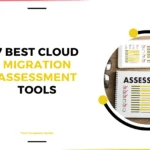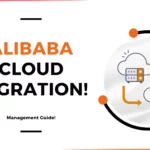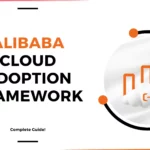For More Info!
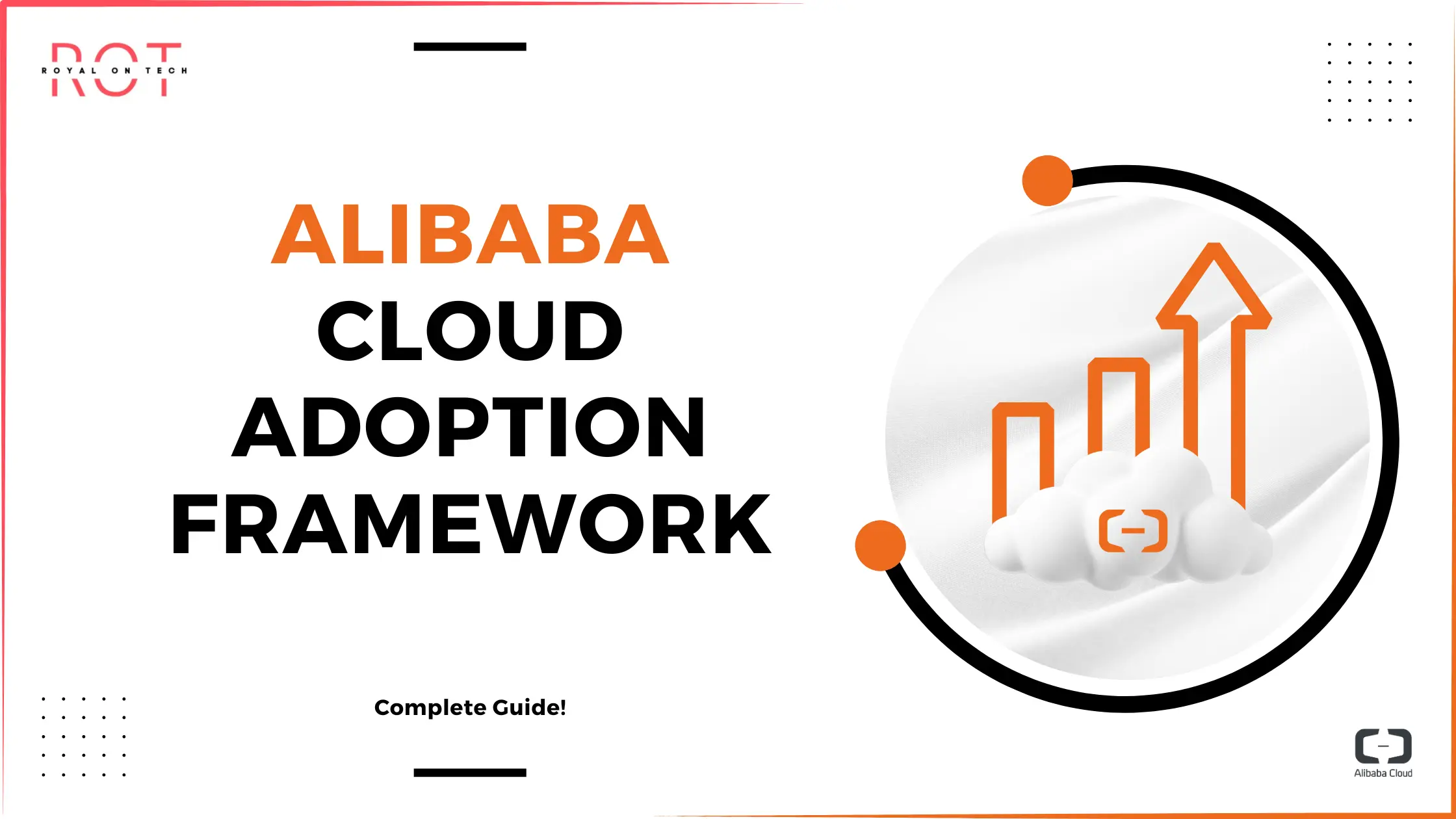
A Comprehensive Guide to the Alibaba Cloud Adoption Framework
The Alibaba Cloud Adoption Framework is designed to guide enterprises through the process of transitioning to cloud-based services.
It addresses strategic and technical considerations to help organizations leverage cloud technology effectively for business innovation, efficiency, and scalability.
This framework, built on Alibaba Cloud’s extensive experience with various enterprises, provides a comprehensive methodology for cloud adoption, covering everything from initial strategy development to ongoing operation and governance.
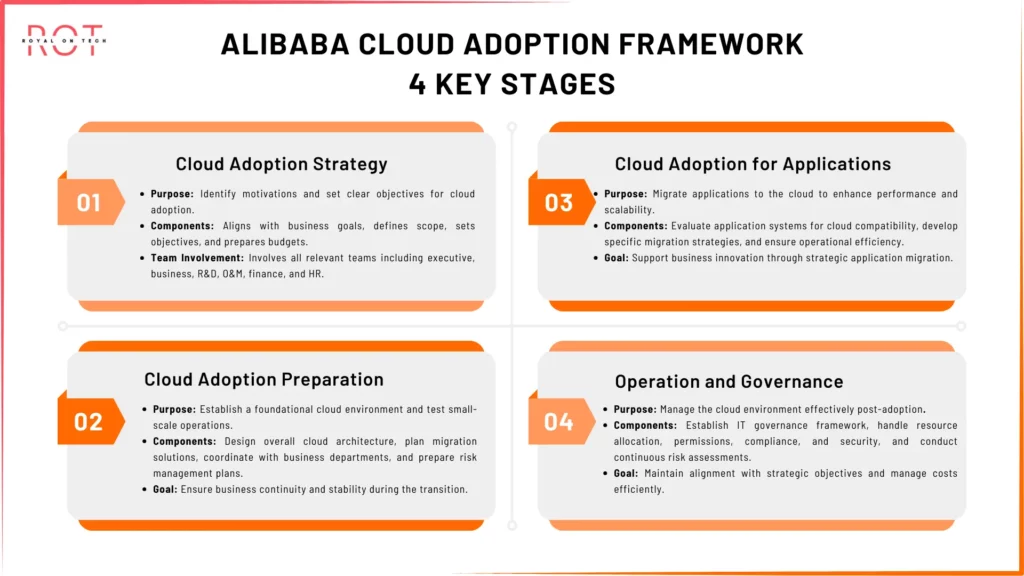
1- Cloud Adoption Strategy
Developing a cloud adoption strategy involves identifying the motivations and expected outcomes for the enterprise.
The strategy must align with the overall business goals and address the benefits and risks associated with cloud adoption.
Key steps include defining the scope of cloud adoption, setting objectives for each stage, and preparing budgets and resources.
This strategic plan ensures all relevant teams, such as executive, business, R&D, O&M, finance, and HR, are aligned and contribute effectively to the cloud adoption process.
2- Cloud Adoption Preparation
Preparation for cloud adoption involves establishing a basic cloud environment and migrating small-scale operations to test and verify cloud services.
This phase includes designing the overall cloud architecture, planning migration solutions, and coordinating with business departments to implement these plans.
The goal is to ensure business continuity and stability during the transition. Enterprises must also prepare a detailed risk management plan to address potential challenges during the migration.
3- Cloud Adoption for Applications
This stage focuses on organizing and evaluating the enterprise’s application systems for cloud compatibility.
It involves selecting which applications to migrate, developing specific cloud adoption strategies for these applications, and ensuring that the migration process enhances their performance and scalability.
This strategic approach to application migration helps maintain operational efficiency and supports business innovation.
4- Operation and Governance
Effective operation and governance are crucial for managing cloud environments post-adoption.
This involves establishing a robust IT governance framework to handle resource allocation, permissions, compliance, and security.
Continuous risk assessment and management are essential to prevent and address issues proactively.
The governance model should also facilitate efficient cost management and ensure that the cloud environment remains aligned with the enterprise’s strategic objectives.
Organizational Model and Core Responsibilities
Successful cloud adoption requires a well-structured organizational model with clearly defined responsibilities.
Typically, an enterprise will have a cloud management team or a Cloud Center of Excellence (CCoE) responsible for overseeing the cloud adoption plan.
This team coordinates with other departments to ensure smooth integration and continuous optimization of cloud services.
The organizational model supports various roles, including architects, technical support, security experts, and financial managers, to collectively drive the cloud adoption process.
Conclusion
The Alibaba Cloud Adoption Framework provides a structured approach to transitioning to cloud technology, ensuring that enterprises can harness the full potential of cloud services.
By following this framework, businesses can achieve greater agility, innovation, and efficiency, while maintaining robust governance and risk management practices.

